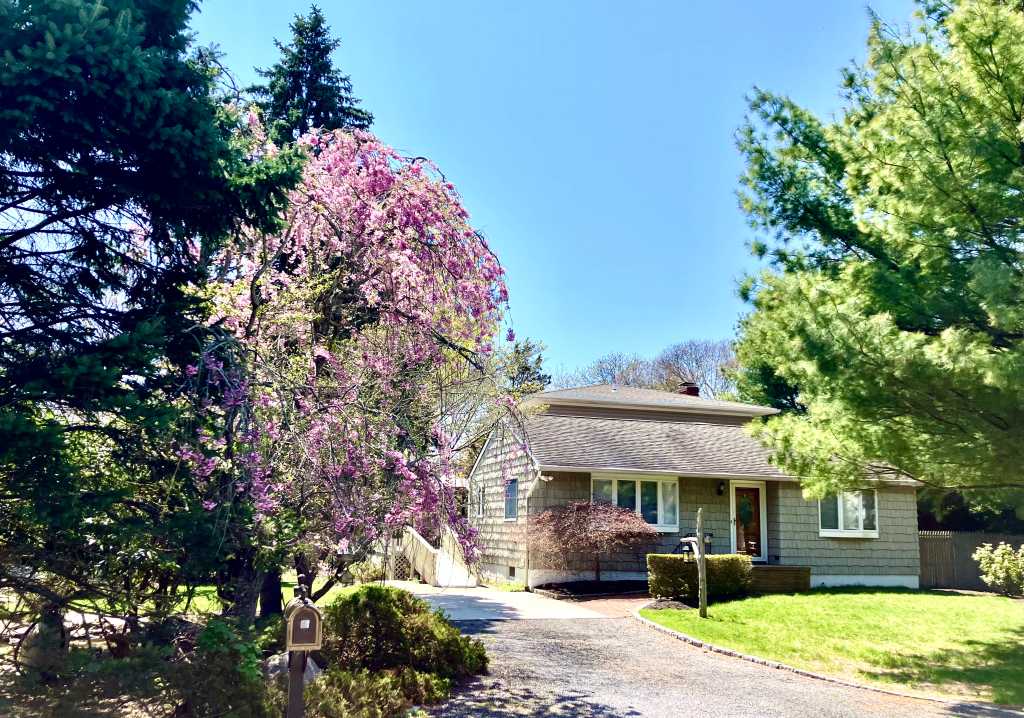Flippers: Poxabogue, Southampton Bath & Tennis and the Concer House

One of the classic ways for a developer to make a few million dollars is to buy a property that, for one reason or another, is undervalued, then put it up for sale at twice the amount and then, without having done anything to the property, sell it to collect the difference. Doing this is called a flip.
When this is done in the private sector, you don’t really hear about it. It’s crummy, but it’s legal. But when the property is a respected community institution, it’s another matter.
During my long half-century tenure I’ve seen a few of these very public flips. They make me angry. Why mess with something that’s for the public good?
One involved the Poxabogue Golf Club in Sagaponack. It had been created as a public golf course by a prominent local family years ago. But by 1999, the last surviving member of that family, a woman, lay critically ill. In that desperate situation, three developers approached her and offered her a million dollars for the golf course property. She didn’t take it, but after her death, her estate did.
The property might have been worth just a million as a little nine-hole golf course, but it was worth about five times that as 26 building lots, or the prospect of 26 building lots replacing the golf course. Much of the public used it. The Town, much to its discredit, had neglected to re-zone the land to prevent that happening. So the developers presented the town with a plan showing little dotted lines where all the homes would be, and the result of this was that the Town of East Hampton and the Town of Southampton—this property is near the property line so both townsfolk use it—chipped in and bought it for about $6 million. The developers divided the profit up by three and walked away.
Another “flip” occurred one year at the Southampton Bath and Tennis Club, which sits oceanfront on Gin Lane in that town. It had been created years before as a beach club for the local merchants and professional people of Southampton who had been denied membership in the exclusive Southampton Bathing Association. The dues weren’t much.
In this situation, along came wealthy “new money” city woman Denise Rich who partnered with an attorney named Tom Golub to buy the place for $7.25 million from the then-owner who was in desperate financial need. She announced that everybody would have to leave. She would be making it her new private home. The members of the club ordered themselves to charge a $50,000 assessment to each member and then raise all the dues by a huge, untold amount every year that would be enough for Rich and Golub to immediately walk away with several million dollars each. Mrs. Rich, by the way, was often seen at the club after that. The buyback including a lifetime membership for her.
An account of that flip, as seen from the inside, told to me Wilbur Ross, is in my new book In the Hamptons 4Ever, which is now on sale everywhere books are sold.
At the present time, this community is celebrating the “saving” of a house in the center of town which, for a long time in the 19th century, had been the home of a former Southampton-born slave named Pyrrhus Concer. For many years his home had not needed saving. It was located exactly where it had originally been built, on .82 acres just across Pond Lane, less than 100 feet from the headwaters of Lake Agawam, adjacent to Monument Square at the foot of Jobs Lane. No other structures were on the property. And everyone believed that this home was on the list of historic properties created by a historian in 1979 when he went around town creating the list. You couldn’t tear down a historic property. Trouble was—and the town was unaware of this—that long ago historian never put it on the list. Not important enough. Who thought African American artifacts out here were important half a century ago?
This came to light when the new owners of the property—David Hermer and Silvia Campo had bought it in 2013—made a presentation to the Architectural Review Board in January of 2014 to tear down the home of Pyrrhus Concer so they could build a new home there. The presentation included a report made by historian Zach Studenroth—that found the home didn’t exist on the list so it was lacked the historical significance to be preserved.
“That study had been funded by the Village,” Mayor Epley told me recently. “But I had not known he had filed the report. So that was the first I heard about it. There was nothing we could do.” What they did do, however, with huge community pushback in late 2013, was reject the application. As a result, the applicants sued for $10 million.
The following spring, Assemblyman Fred Thiele Jr., of Sag Harbor declared March 17 Pyrrhus Concer Day in New York State to honor the 200th anniversary of Mr. Concer’s birth.
It might be interesting at this point to describe the life of Pyrrhus Concer. He was born in 1814 to Violet Williams as the property of a Southampton farmer named Nathan Cooper. He was sold at the age of 5 to Charles Pelletreau for $25. (The Pelletreau family were silversmiths in town). And at the age of 23—10 years after the State of New York abolished slavery—he was freed.
Concer became a crew member of a whaling boat out of Sag Harbor and in 1845, he became what many believe to be the first African American to ever come ashore in Japan. Four years later, he left off whaling and went to San Francisco in search of gold. Sometime after that, however, he returned to Southampton and went into business. From about 1850 until 1897, he ran a ferryboat during the summer that sailed beachgoers across Lake Agawam from a dock near his house to a dock on the other side of the lake across from the ocean bathing beach. He charged 10 cents. When he died, at the age of 83, his obituary in the local paper described him as one of the most respected residents of the village.
How to resolve the situation? Hermer and Campo told the Mayor they just wanted to have a beautiful new private home for themselves there. The application showed a large McMansion of 5,700 square feet with a swimming pool and pool house. An existing accessory cottage would be moved to the back of the lot for guests. The Village had no legal leg to stand on. So rather than lose later at great expense, Mayor Epley made the decision to negotiate as best he could and then let the application proceed. The project was thus approved by the Architectural Review Board in May of 2014 to much distress on the part of the citizenry, with the caveat that the village be allowed a six-month period during which they could send in people to remove certain old beams and flooring of the historic house, enough to reconstruct it somewhere else, if possible. Days after the agreement, Hermer and Campo got their building permit to tear down the historic house. And so the clock began to tick.
It’s interesting to note that beginning on Labor Day in 2014, as part of the Mayor’s plans to celebrate the heritage of the village, the ferry that Concer had run was run again, free of charge, from a dock newly built at the headwaters of Lake Agawam to all who wanted to take that route down to the beach. That ferry ride continues this year as well.
According to the Mayor, perhaps the bitterest moment came five days after Hermer and Campo got their permit to demolish the Concer house. A representative of theirs arrived at Village Hall and said they were not going to be building a new home there after all. They would, instead, be putting the raw property up for sale for $5 million since now without the encumbrance of the old house and with its architectural review board approval it
would be worth a lot more. As a result of this new decision and in accordance with Village law, they were entitled, if they came back within seven days of the issuance of their permits, to get all the money they paid for them back. The Mayor had to cut them a substantial check.
After that, the Concer house was, as agreed, partially disassembled by Village carpenters and historians, key beams and posts and flooring were taken away. It was found, by the way, that the original house, which had beams from the 1800s, was much smaller than the house that was there now. There had been additions made to it, porches and extensions. But the village had the essence of what Concer had lived in. After that, the Village gave Hermer and Campo the go-ahead. The rest of the house was then torn down and taken to the dump.
The next act, of course, would be to find a new place for all the saved Concer lumber so the house could be rebuilt elsewhere. The Village considered a vacant half acre directly adjacent to the children’s playground just 500 feet away across the pond. A low wall with a break in it separated this land from the playground, which, otherwise, was waterfront. This half acre was owned by the County but had been preserved as open space with CPF (Community Preservation Fund) dollars, the money accumulated as a tax on real estate transactions that could be used to preserve property. The Mayor held a meeting with County Legislator Jay Schneiderman who saw no problem with it, provided the CPF people would approve.
“We move it 200 yards,” the Mayor told me, “and good luck with their finding a new buyer for $5 million.”
That is not what happened, however. Instead, with the support of many historical officials in the community, the county was approached again, not about the property next to the playground, but about the possibility of buying the old property back from Hermer and Campo and putting the house back where it was, using the money from the same CPF fund that had bought the half acre. It could.
The amount that could be used, however, could not exceed the amount that an appraiser would decide upon. If it were $3 million or $3.5, then the balance of what the Hermers wanted would have to be raised privately.
Still there were voices raised about not proceeding with this.
As reported by Newsday, Brenda Simmons, director of the Southampton African American Museum said, “I have absolutely no desire to give the owners the satisfaction of fulfilling their ‘dream scheme’ of making a profit off of…destroying the home of an extraordinary man that the village seemed to have forgotten about or overlooked.”
The appraisal came in at $4.5 million. It was offered. And Hermer and Campo took it, walking away with a tidy profit because a historic house everybody thought had been put on a list had not been.
And so the original Concer home, as was, will now be rebuilt exactly where it had been up until July of 2015. It will become a museum and study center in celebration of this remarkable Southampton citizen.
What will the re-construction cost? Could be as much as a million dollars to match the kind of construction done in those days. Perhaps some wealthy people with a love of history will dig into their pocket to do it. I wonder if the Hermers would contribute.
Therein ends the story of the “flip.”



